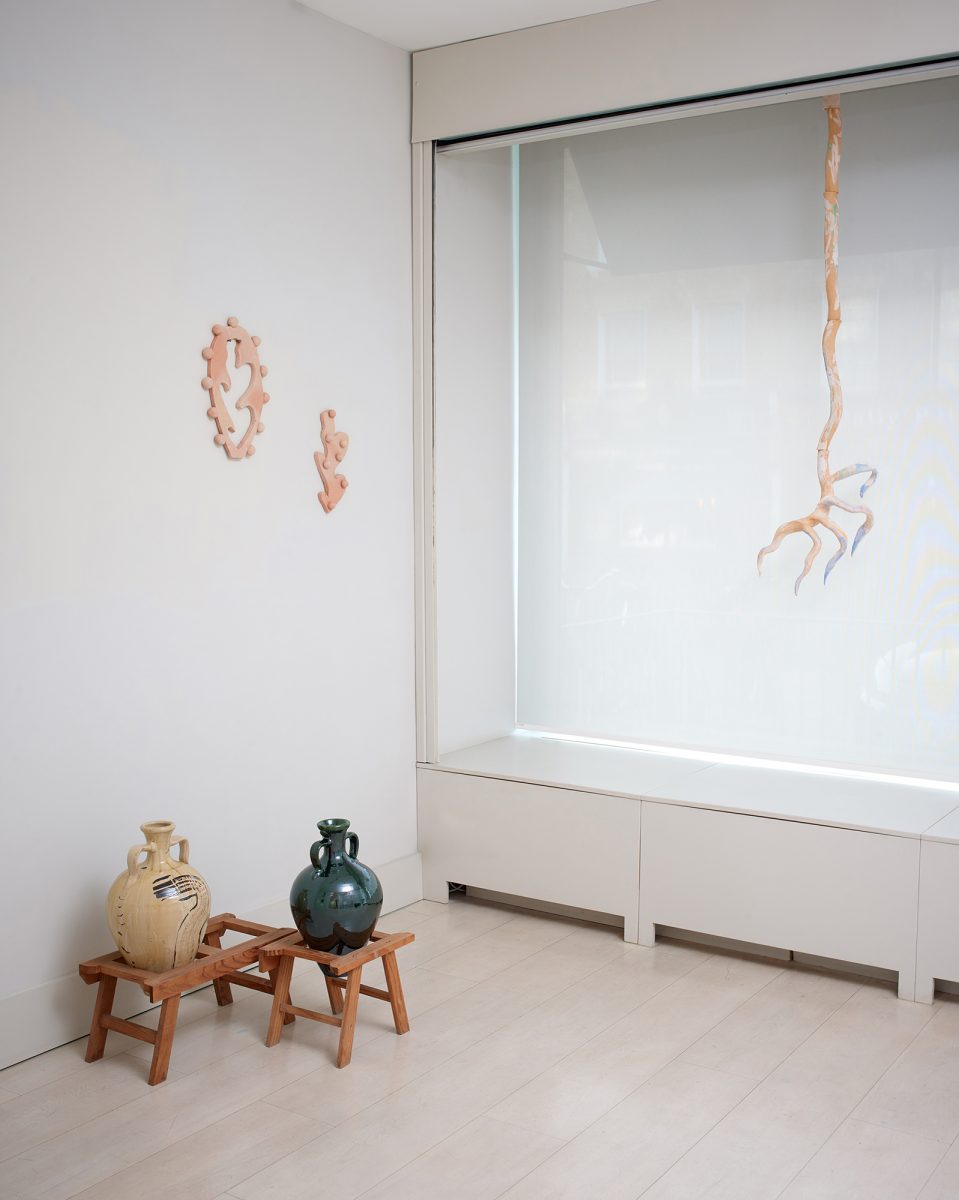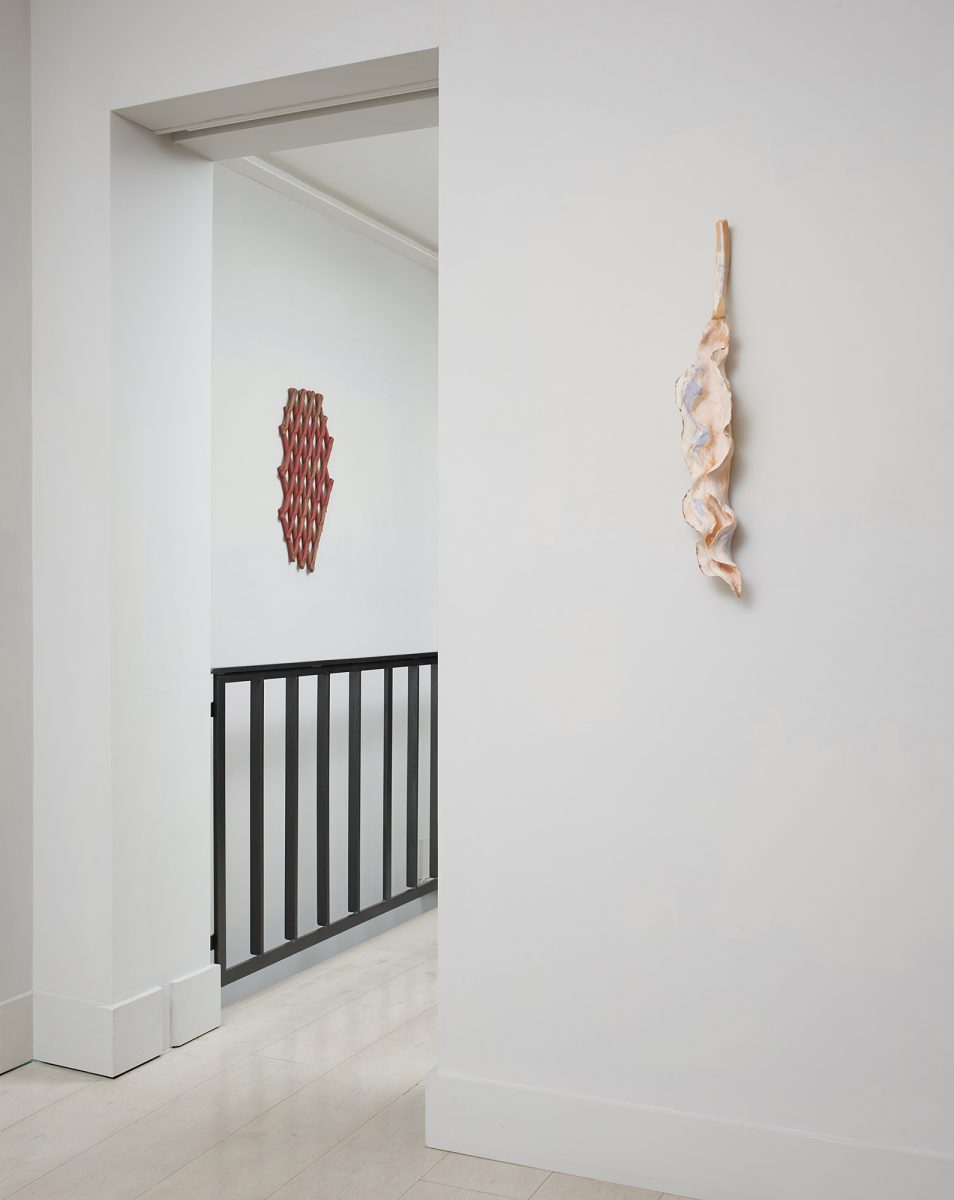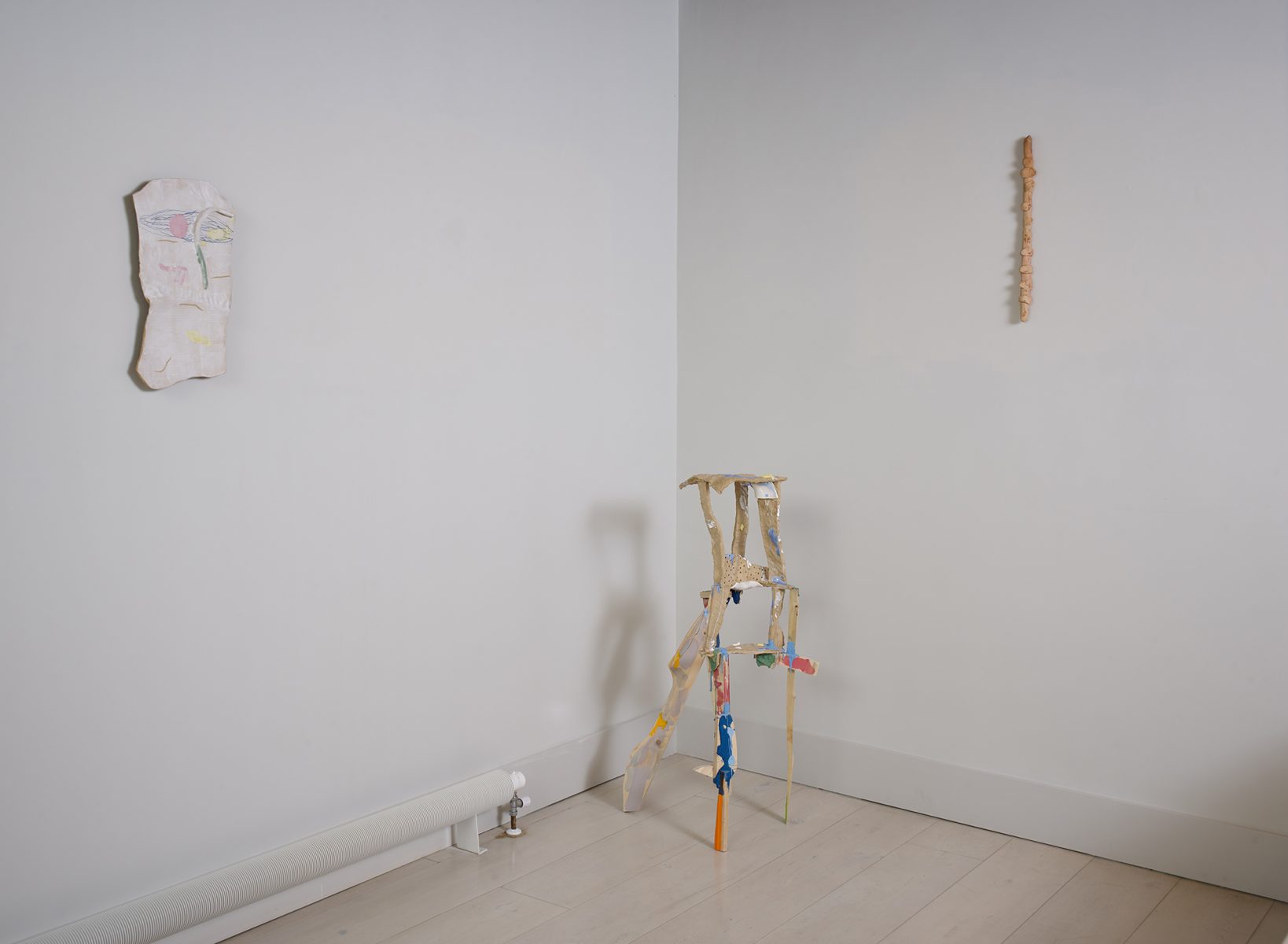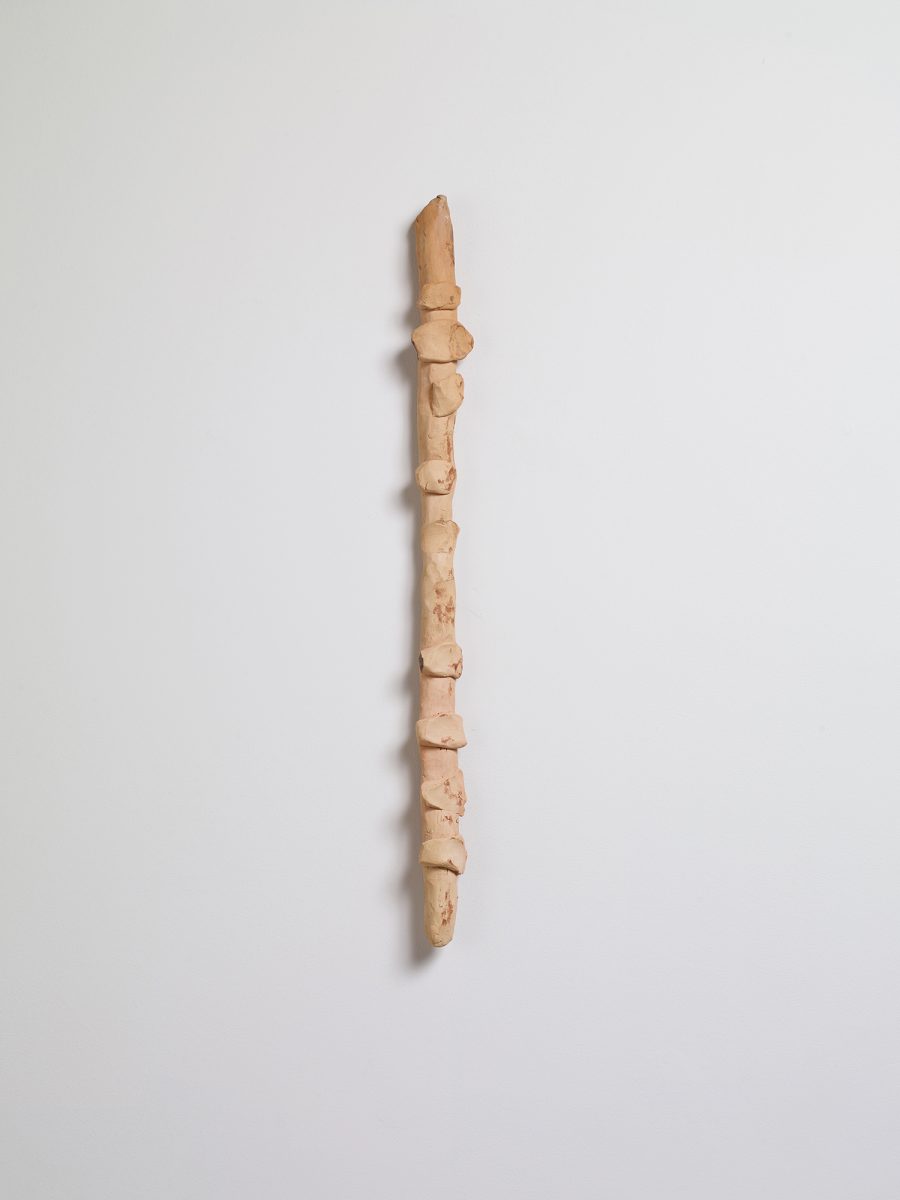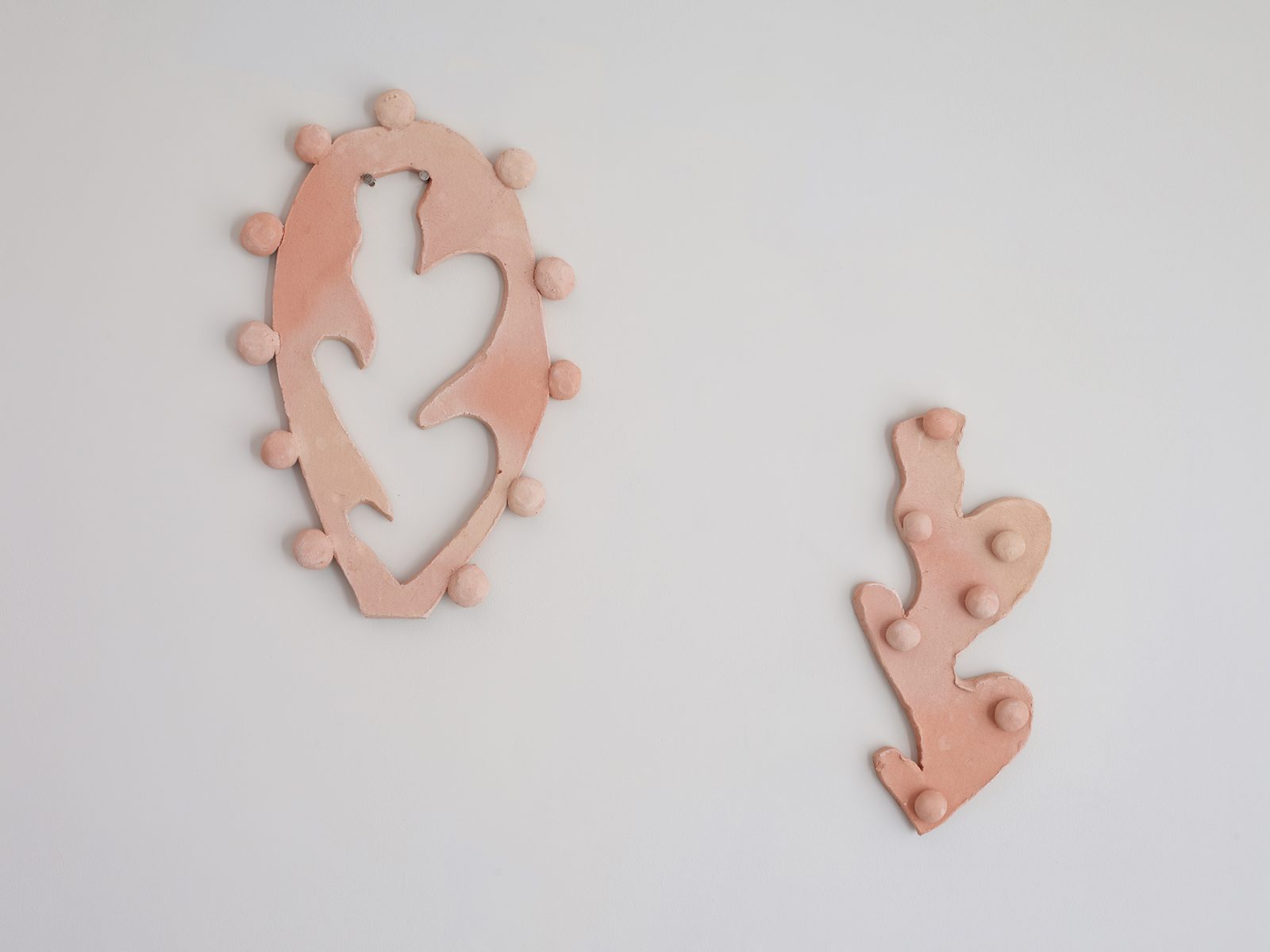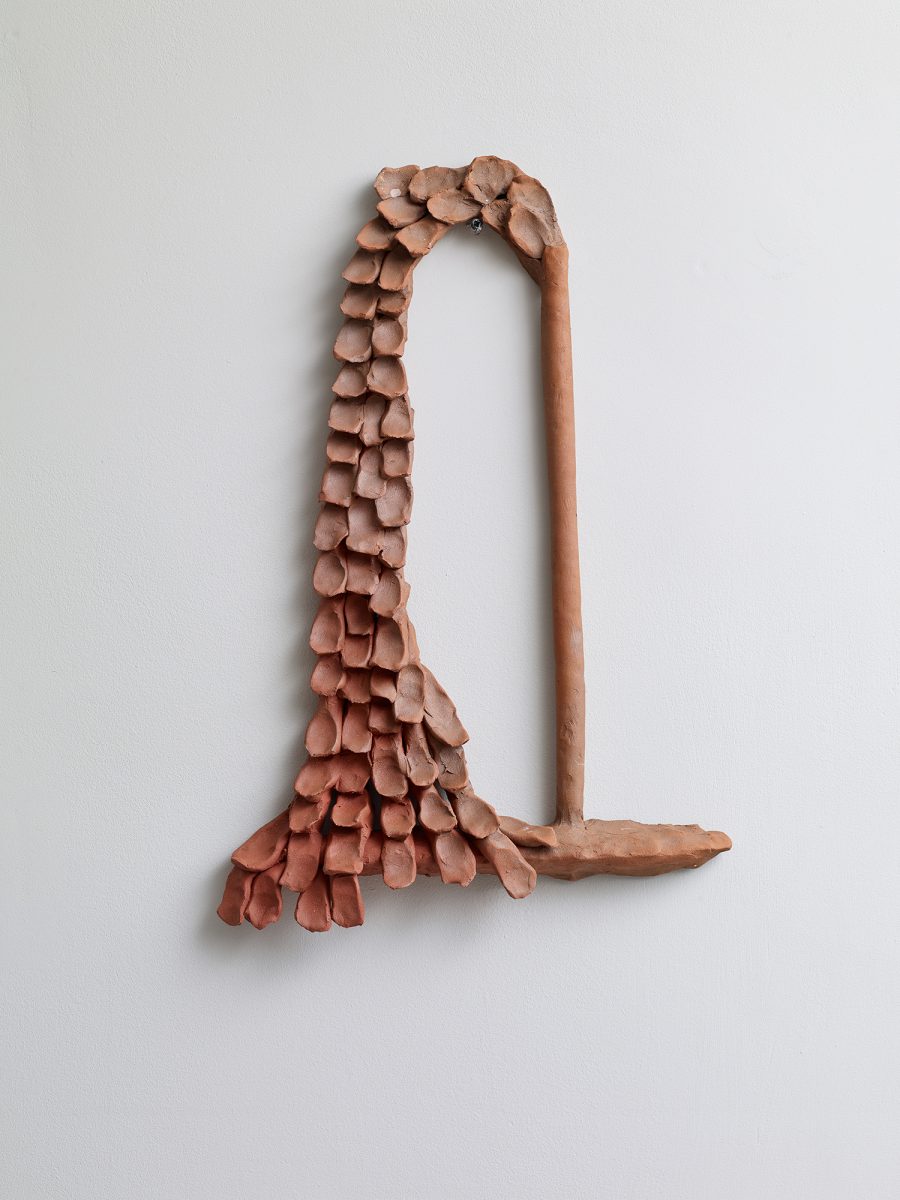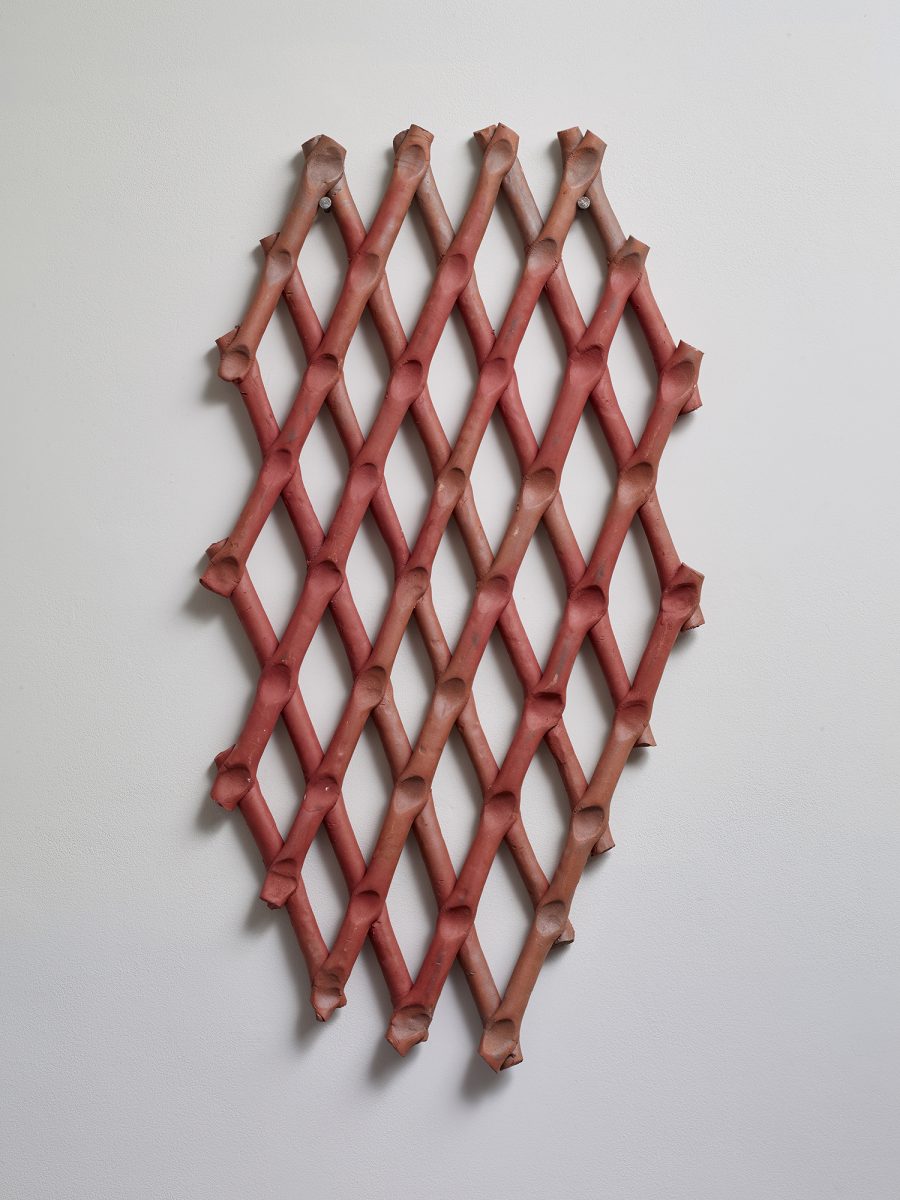Patti Smith’s song ‘Dancing Barefoot’ gives the show its title. Somehow it’s imprinted on my memory: artists who sometimes sing barefoot during their concerts – Beth Ditto, Ney Matogrosso, Bjork and Kate Bush, to name a few. Is it simply more comfortable, or does it actually heighten their senses as they perform: a sense of emotional contrast and vulnerability? Bjork declares that one of her reasons is that she prefers to be a shorter distance from the ground. Whatever the reason, it somehow always makes me drop my guard, even as I watch from a great distance.
The relationship between an artist and their given material in the process of making can be quite idiosyncratic. It can be instinctive, indecisive, and deliberate, or not; it can show an indecisiveness that leads to a moment of assertiveness. It relates to making and unmaking, to moments of negotiation, to strong gestures and, often, a remarkable, unexpected outcome. The skin-on-skin encounter – or skin-on-something – is described as a pleasing feeling of touching, squeezing, banging, rolling, cutting, putting pieces together; clay as a malleable, changeable material which holds a particular emotional charge, and a certain feeling of being beyond control (according to the ceramicist Jacqueline Poncelet). This exhibition gathers five artists who share a great deal of strength and a straightforward freshness in their work. Lorena Ancona, Matthew Lutz-Kinoy, Nao Matsunaga, Tiago Mestre and Anna-Bella Papp present works that suggest an open encounter, one I find very inspiring and engaging. There is an unusual assertiveness that can only come from the individual experience of making and unmaking, over and over again. The works, in their openness, offer a very raw form of belonging to the world. It’s hard to ignore the reach of their presence, even with such economy of means. I am glad that they are here, that they exist. There’s a physicality in the works that reveals, in some cases, performative elements, where gestures and gravitational pull are very evident. The cracks are there; they might be unplanned. But like scars, we gradually get used to them, even starting to enjoy their now inevitable presence. I also relate this effect to the hopeful idea of restoration and the acknowledgment of imperfection.
It has given me great pleasure to be able to put together the artworks for this exhibition. There wasn’t much planning as to the outcome or unfolding dialogue between them. I tried to make sure that there was some space for things to happen, to allow myself and the viewer to experience something specific to this moment and to learn something from it. To learn in a very broad-minded way. To learn, as in: to create a discussion. To learn, as in: to relate to something we might have seen before, somewhere, to perhaps return to it only to evolve further.
